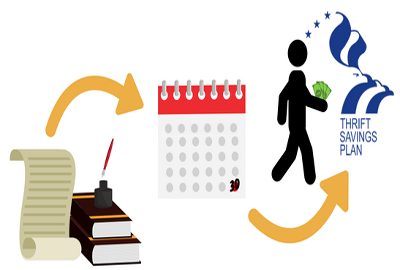
TSP planning to add more stock to participants’ L fund investments
The Federal Retirement Thrift Investment Board, the agency that administers the Thrift Savings Plan, said it will begin a 15-year plan to add more stock holdings to...
The Thrift Savings Plan will begin a multi-year effort to slowly shift more stock into some of its participants’ lifecycle investments.
The goal, according to the Federal Retirement Thrift Investment Board (FRTIB), is to help participants receive a greater return on the TSP’s lifecycle funds in retirement, without assuming too much risk or adding disruption.
The 15-year-plan is designed to create a series of L funds for the average participant that, in combination with the Federal Employee Retirement System (FERS) defined benefit plan and Social Security benefits, would leave a retiree with enough assets to maintain a comfortable standard of living.
When the TSP opens the next L fund, L2060, it will begin to invest 99 percent of participants’ holdings in stock, instead of the current 90 percent. Meanwhile, the FRTIB will freeze stock allocation for the L2030, L2040 and L2050 funds at the current fiscal 2018 quarter 4 levels as it transitions to the new L2060 fund.
The TSP agency is deploying what it referred to as a “glide path,” which will facilitate this transition over the next 15 years.
Over a period of 10 years, stock will make up 30 percent of assets in the L income fund, as opposed to the existing 20 percent allocation.
In addition, the TSP will immediately increase the share of international stock in all lifecycle funds from 30 percent to 35 percent.
TSP’s lifecycle funds are professionally determined investment mixes of the G, F, C, S and I funds that are designed to meet participants’ needs, namely their target retirement timelines. Investment mixes typically become more conservative as the participant nears retirement.
Based on the FRTIB’s new glide plan, the agency will invest the L funds more heavily in stock in the beginning of a federal employee’s participation in the fund, but that allocation will decrease as the participant gets closer to his or her retirement date.
Specifically, the TSP agency will also adjust its rules for automatically assigning new participants to appropriate L funds to assume that their first withdrawals would come at age 63, rather than 62.
“This change in definition means that any new auto-enrollments into the L funds will now hit the minimum risk, minimum stock portfolio at an average age of 63 once this change is completely implemented, versus existing auto-enrolled participants who will hit the minimum risk, minimum stock portfolio at an average age of 62,” FRTIB Chief Investment Officer Sean McCaffrey wrote in a memo describing the new plan.
The FRTIB presented this plan to board members earlier this week. The agency regularly reviews its fund assets and allocations, and it hired the Aon Hewitt Investment Consulting group to assess the TSP’s L fund and offer recommendations.
In its review, Aon Hewitt suggested the TSP could afford to take on slightly more risk due to the security that most federal employees currently have under their “three-legged stool” retirement plan.
The time may be right for these changes, the TSP said, as the demographics of its participants begin to skew younger and a new influx of military members join the plan.
In addition, the FRTIB is already expanding the L fund’s asset allocation from 10-year to five-year increments. The agency has said this would allow participants to better target their retirement plans and would move the TSP in line with other comparable 401(k) style plans.
The latest L fund project is one of many on the FRTIB’s to-do list. The agency is preparing to officially give TSP participants more withdrawal options by next September and is introducing a new group of people to the plan as military members opt in to the blended retirement program.
The agency’s budget is set to rise by about $50 million, as the FRTIB increases its capacity to deal with a growing participant population and more demand to expand its contact center operations, record keeping capabilities and cybersecurity posture.
The FRTIB expects the TSP will have roughly 6 million participants by 2020.
Copyright © 2025 Federal News Network. All rights reserved. This website is not intended for users located within the European Economic Area.
Nicole Ogrysko is a reporter for Federal News Network focusing on the federal workforce and federal pay and benefits.
Follow @nogryskoWFED





